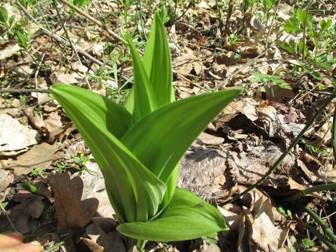
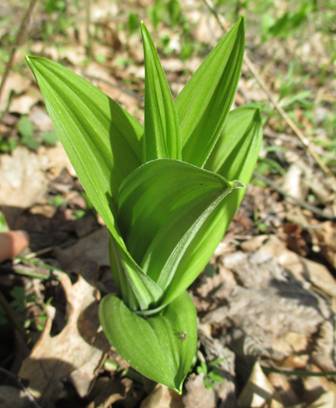

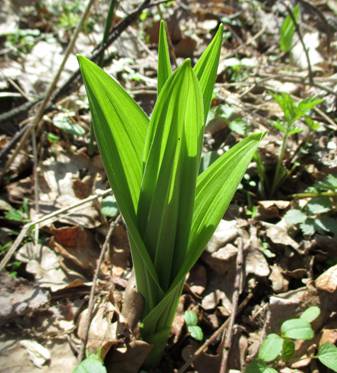
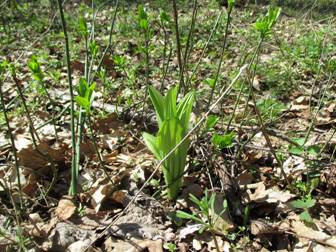
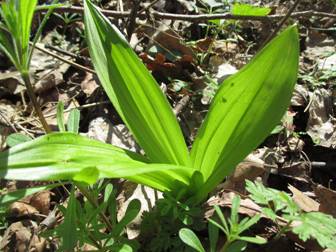
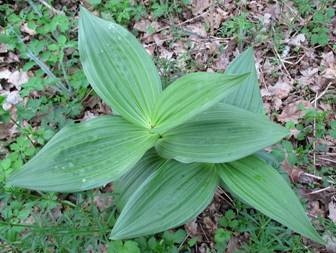
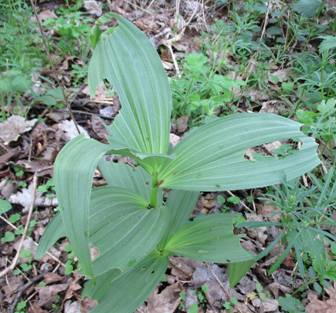
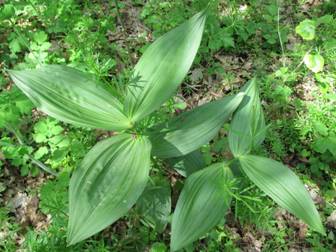
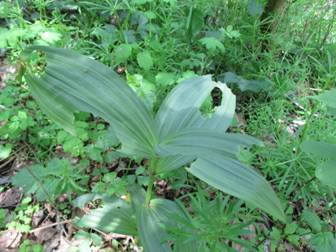
False Hellebore, Corn Lily (Veratrum lobelianum), fam. Melanthiaceae or Liliaceae.
A few exemplars of this rare plant have been found among the humid woodlands, close to the lakes 1 km to the south of Rybne village (see map). In April, while the surrounding herbs have not grown tall, and there are no leaves on the trees yet, young False Hellebore shoots are very showy: large lily-like leaves look like an equilateral triangle when viewed from above. With time, it gets more and more difficult to get to that group of False Hellebores, as it becomes surrounded by dense, taller than a man thickets of Stinging Nettles, Beggarticks, and Woodruff by the beginning of summer. Before this happened, it was found that some leaves have been eaten by bugs or snails (slugs). This is really amazing, since many sources list False Hellebore among the most poisonous plants of our country. Its juice is acrid and may irritate skin and mucosa, and ingestion of a tiny quantity of its powder or extract causes vomiting or severe poisoning, sometimes fatal. False Hellebore is not eatenby cattle, so it may often become an annoying weed of the pastures. The infusion can be used with care against skin parasites.
The blooming of the plants has not been observed yet. It is doubtful that they bloom at all in those places – probably, in such a dense shade from nettles and trees False Hellebore regularly gets suppressed and every year gives the spring vegetative shoots only.